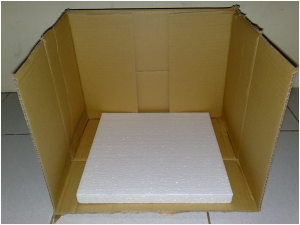Spray booths rely on having good air circulation to operate effectively. There are several different methods of air circulation in use, so it is important to choose the right technology for your needs when you are selecting a booth.

Image Credit
Booth designs
There are two main types of booth: crossdraft and downdraft. Crossdraft is used in fairly basic applications and utilises an airflow that enters at the front of the booth and exits at the rear. The problem with this type of booth is that it can increase the risk of contamination and flaws in the finish.
For more sophisticated spray systems, downdraft circulation is more common. In this type, the air enters at the top of the booth and exits via the floor. This minimises contamination and reduces the risk of overspray; however, installation costs are higher with this type of booth and they need regular maintenance to continue to operate effectively and safely.
There are different types of downdraft booth. Some have exit vents along the base, but these can need extra maintenance due to the ducting required. There are also semi-downdraft types that employ horizontal and vertical airflows. Air flows diagonally across the booth and exits near the base. These offer a good compromise between speed, quality and efficiency.

Image Credit
Other considerations
Of course, any spraying application needs spray booth filters to ensure safe operation for employees and a good quality finish. Filters need to be renewed regularly to maintain efficient operation, with replacements widely available for different types of system from suppliers such as https://www.dustspares.co.uk/spray-booth-filters/.
Some booths use a recirculating filter system to recycle air and spray products. Used effectively, this type of booth can boost efficiency and cut costs by reducing waste. While recirculation can work well for smaller spray booths, it is not so good for larger ones that need a more tightly controlled set of temperatures and humidity.
With any system, it is important that air flows are consistent. If air is allowed to enter the booth faster than it can leave, for example, the variation in pressure can have an adverse effect on the quality of the final finish. Maintaining positive pressure within the booth compared with the external environment can make for a cleaner and safer unit that will produce better results.




